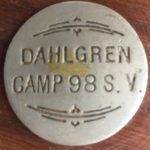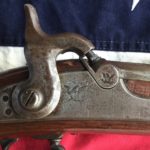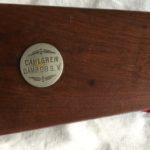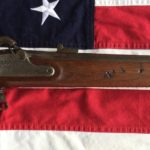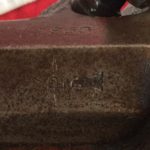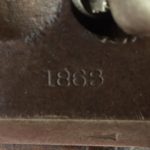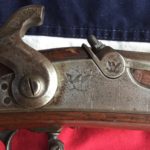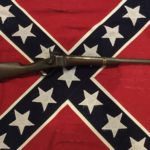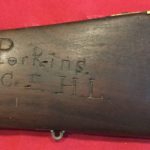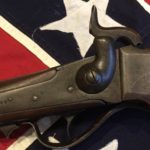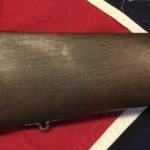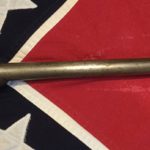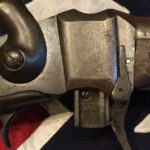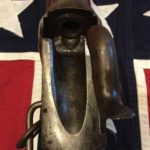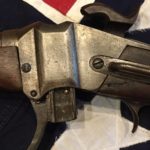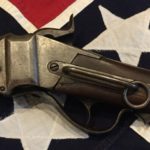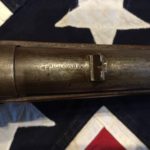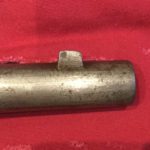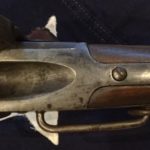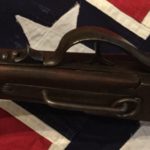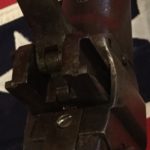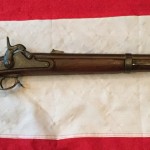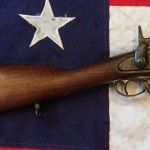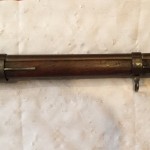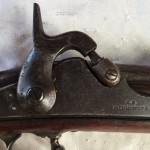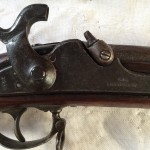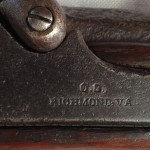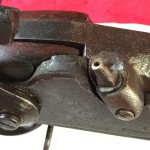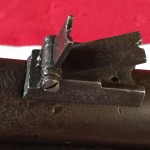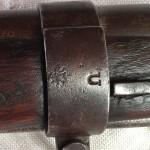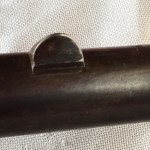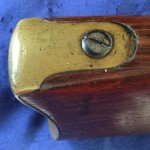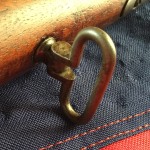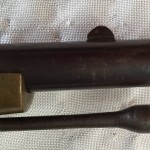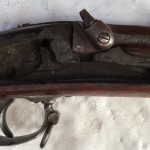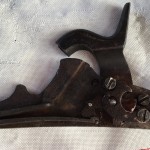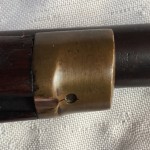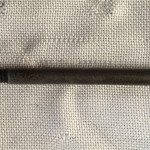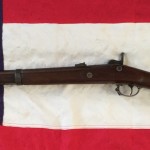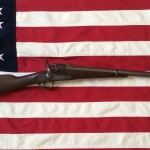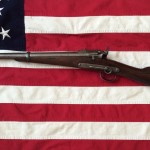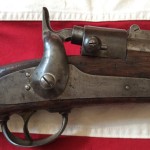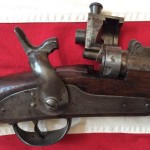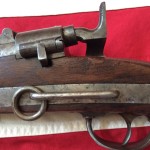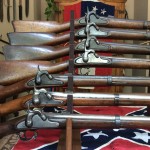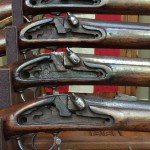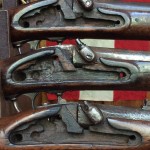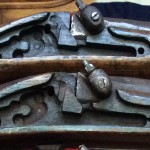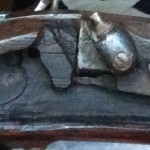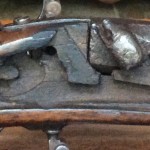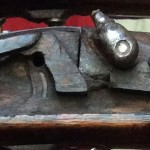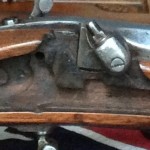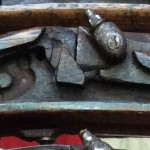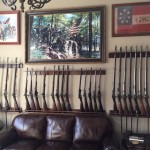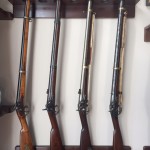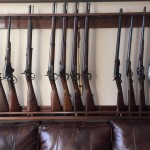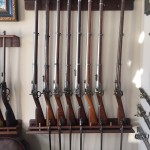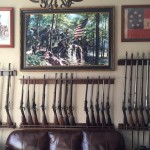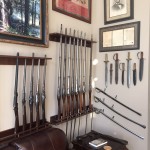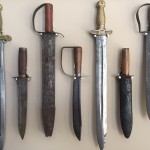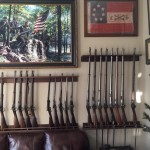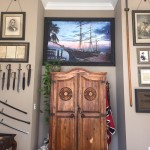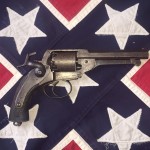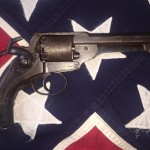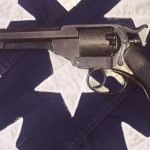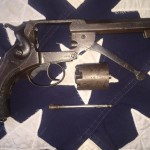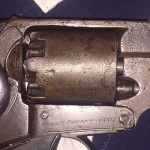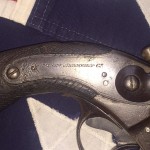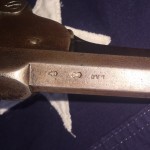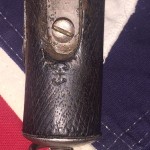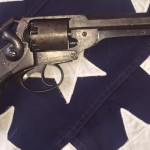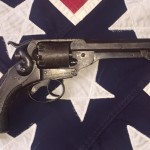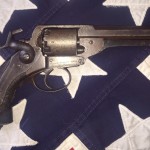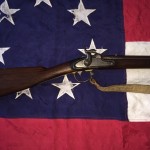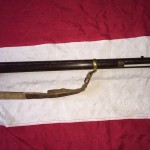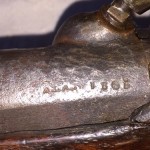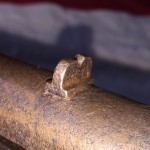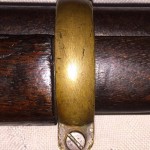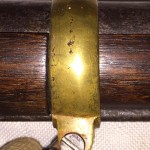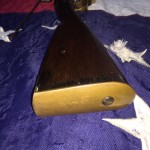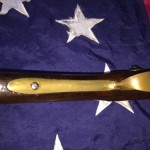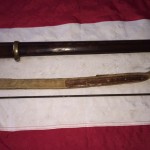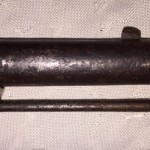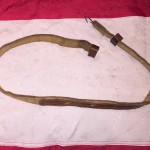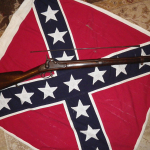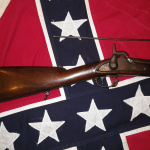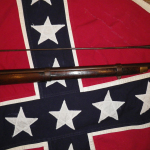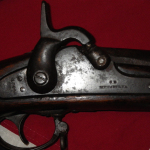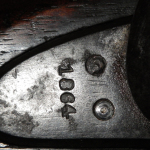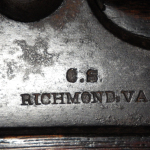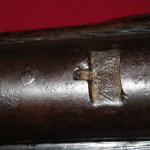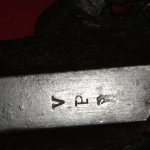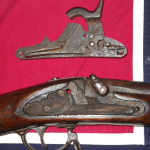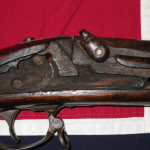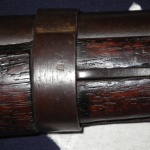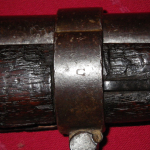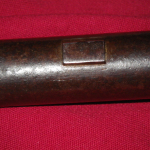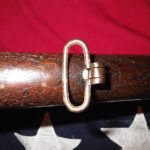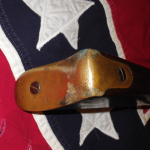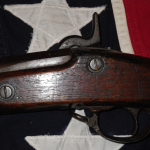-
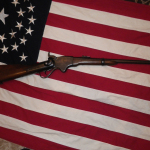
-
1865 Spencer Repeating Carbine, Full View
-
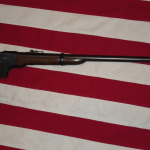
-
1865 Spencer Carbine Barrel
-
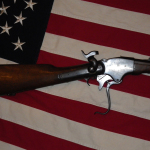
-
1865 Spencer Carbine Receiver Stock
-
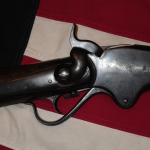
-
1865 Spencer Repeating Carbine, Receiver, Hammer and Trigger
-
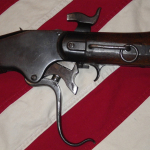
-
1865 Spencer Repeating Carbine Receiver
-
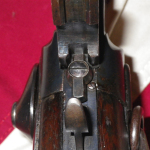
-
1865 Spencer Carbine Stabler Cut-Off Device, Single Shot Position
-
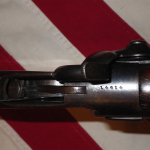
-
1865 Spencer Carbine Serial Number
-

-
1865 Spencer Repeating Carbine Stabler Cut-Off Device, Repeating Position
-
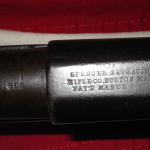
-
1865 Spencer Carbine Manufacturers Stamp
The Civil War Arsenal has been focusing mostly on Confederate Weapons, the author has been crazed by these Southern beauties. But the Arsenal is full of other war time weapons that have been praised by the men of their time. The one we’ll showcase in this article is the 1865 Spencer Carbine.
The Spencer is considered the first successful repeating carbine to fire a metallic cartridge. Men from both the North and South agreed that the Spencer had a hand in turning the tides of the War in favor of the North. The inventor of the weapon was Christopher Miner Spencer. Born in Manchester Connecticut at the age of 19 was issued U.S Patent # 27,393 for a tubular magazine cartridge firearm in both carbine and rifle design.
In July of 1861 the U.S Government (Navy) placed there first order for 700 Spencer rifles with sword bayonets and 70,000 metallic cartridges, which were issued to Mississippi flotilla gunboats. At the battle of Gettysburg a portion of General Custer’s Michigan Brigade were armed with Spencer rifles which they used against Jeb Stuart’s Calvary with tremendous success.
Two versions of the Spencer were manufactured by both the Burnside Rifle Company (30,496) and the Boston Rifle Factory that was owned and operated by Christopher Spencer (64,685) for a total of 95,181 weapons and 58,238,924 cartridges. The 56-52 and 56-50 rim fire metallic cartridges were used in the Spencer Carbines. The 56 stands for the Spencer cartridge and the 52/50 stand for the bore diameter. The Burnside shot 50 caliber while the Spencer shot 52 caliber.
The Spencer carbine manufactured in Boston Mass. has an overall length of 39 inches and weights 8 pounds 4 ounces, case hardened lock, two piece black walnut stock with the butt stock being 15 inches. The barrels are blued and 22 inches long (however this M-1865 Spencer has a 20″ barrel) a brass blade front sight and a single leaf rear V notched rear sight graduated to 800 yards.
A tubular magazine located in the butt stock to feed the rim fire cartridge, capable of holding 7 copper cartridges were pushed forward to the receiver by a coil spring. To fire the Spencer carbine the operating lever is lowered ejecting the previously fired cartridge bringing the next cartridge into position, the hammer is then cocked and the carbine is ready for firing. Seven cartridges could be fired in about 10 seconds.
In the latter part of the war Edward M. Stabler of Maryland invented the Stabler Cut-Off Device. It prevented the cartridge from feeding the magazine to the receiver by limiting the lowering of the breech block. The carbine could then be used as a single shot weapon. A few of the carbines manufactured by the Spencer factory, plus 19,000 of the 30,496 of the Burnside Spencers were equipped with the Stabler Cut-Off Device.
The Blakeslee cartridge box received U.S. Patent # 45,469 on December 20, 1864, invented by Colonel Eratus Blakeslee of the 1st Connecticut Voluntary Calvary. The cartridge box was capable of carrying 10 to 13 tinned tubes containing seven Spencer cartridges each, giving Union Calvary men an additional 70 to 91 cartridges at there finger tips.
At the 1865-66 carbine test trials, the Spencer was rated the best arm of its kind offered for use. The Spencer carbine was carried by Custer’s 7th Calvary at the Battle of Little Bighorn and was used until it was replaced by adoption of the 45-70 trapdoor Springfield in 1873.
After the war demand for the Spencer declined and the Company went out of business in September 12, 1869. Its assets were purchased at auction by the Winchester Repeating Arms Company in 1870.
Which brings us to this fine example of an 1865 Spencer Repeating Carbine which has the Stabler Cut-Off Device. The stock is in excellent condition, the receiver still has signs of bluing and the barrel and all hardware having a nice brown patina. I don’t normally shot any of my antique weapons but I purchased preloaded cartridges from Dixie Gun Works and had a blast shooting this weapon at targets of 25 yards, the weapon shot flawlessly hitting the target most of the times. Ironically I am not a good shot but the Spencer Carbine made me a Marksmen.
I must offer credit and thanks to author John D. McAulay for his book Carbines of the Civil War 1861-1865 for many of the facts written in this article are a result of his hard work and research.


